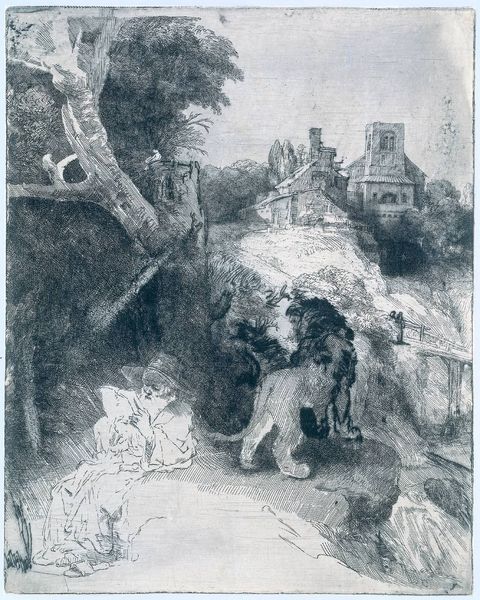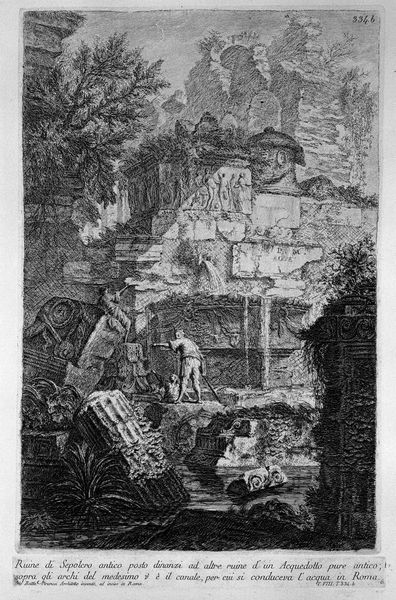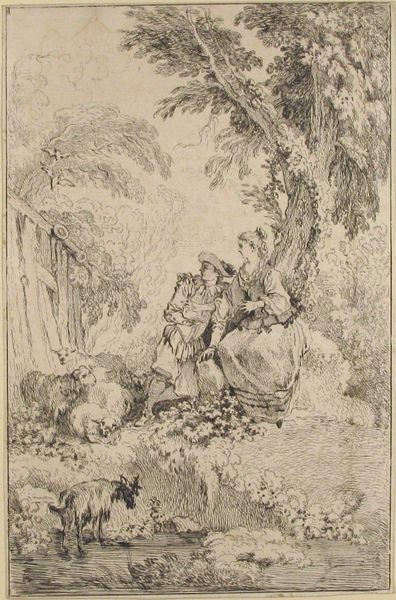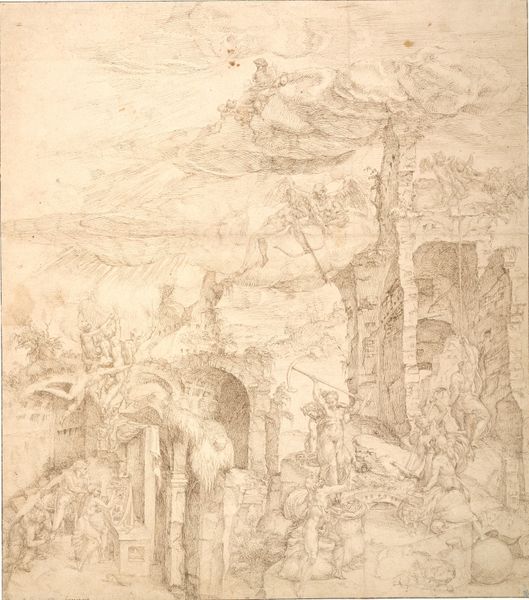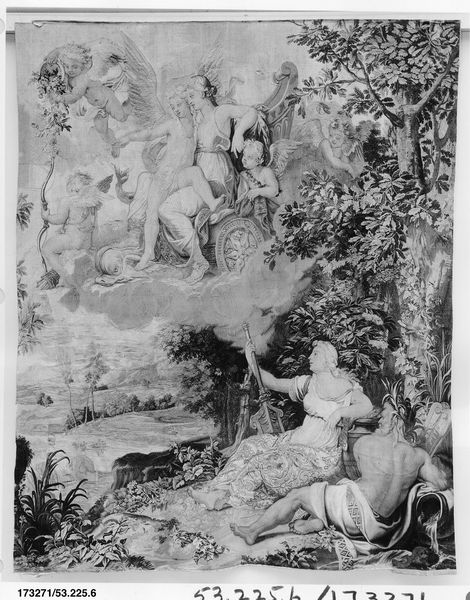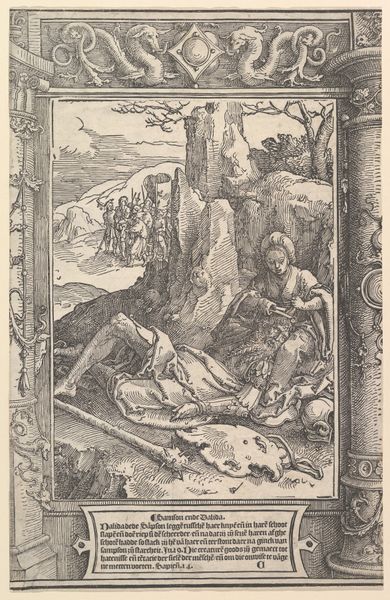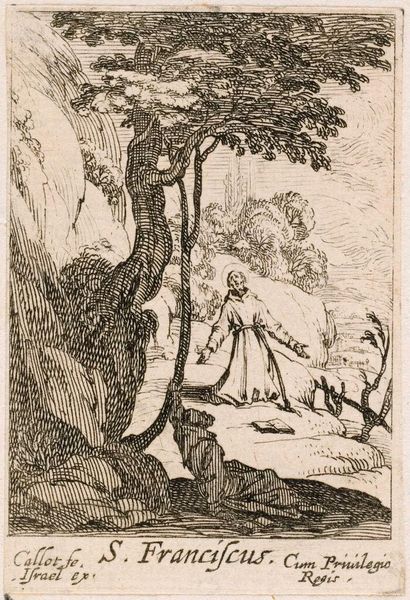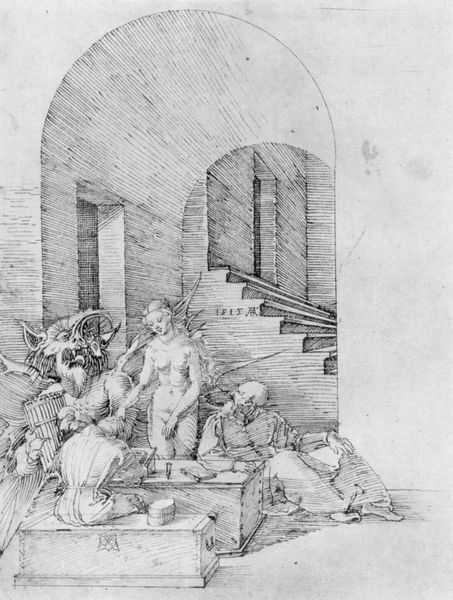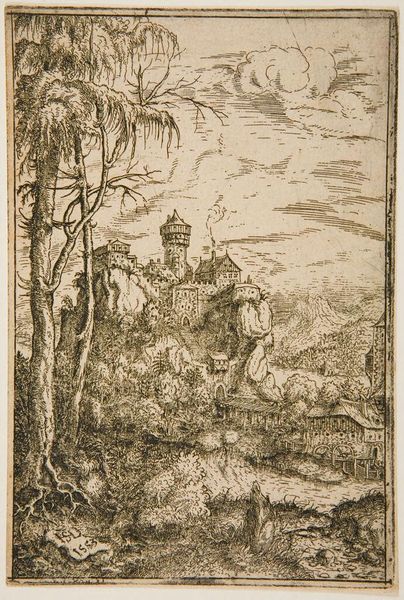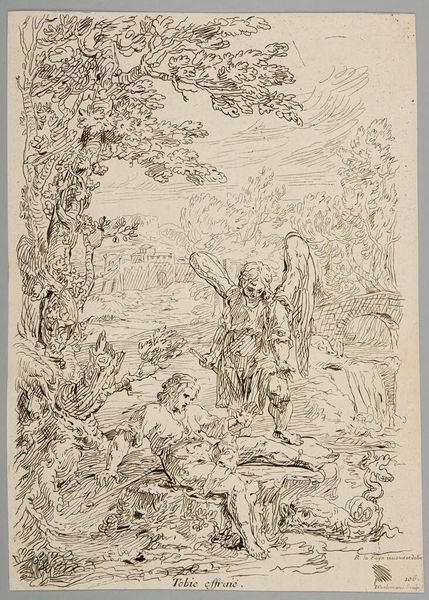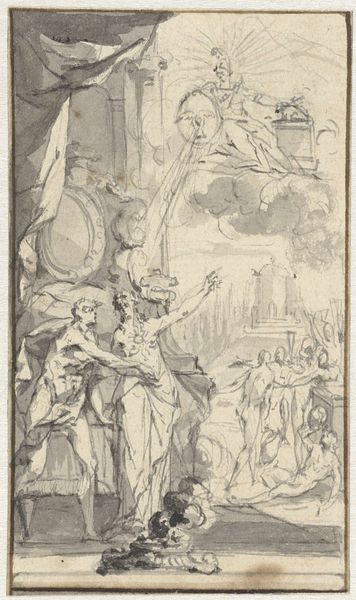
Saint Jerome seated beneath a rocky arch 1500 - 1510
drawing, print, pencil
drawing
landscape
figuration
pencil drawing
pencil
line
italian-renaissance
Dimensions: plate: 11 x 8 7/8 in. (28 x 22.5 cm) trimmed to plate
Copyright: Public Domain
Editor: This is "Saint Jerome seated beneath a rocky arch," a pencil drawing printed around 1500-1510 by Benedetto Montagna, currently housed at the Met. I’m struck by the contrast between the rugged, natural setting and the depiction of St. Jerome – it feels like a stage for contemplation, or even a confrontation with faith. What social functions would an artwork like this perform in its time? Curator: That's a key question. Consider the function of images of Saint Jerome. He represents the Church's intellectual tradition, celebrated as a translator of the Bible. Printmaking in this era was transformative, allowing for wider dissemination of images like this. Do you notice anything about the context in which Jerome is placed? Editor: It seems like a rather remote and wild setting, especially compared to how I've often seen saints depicted indoors or within church settings. The landscape feels imposing, even slightly unsettling. Curator: Precisely. Montagna is situating Jerome not just as a scholar, but within a lineage of hermits and ascetics. By placing him within this carefully constructed natural landscape, he reinforces a connection between piety and nature, readily available to wider audiences of that time. Editor: So the print serves not only a devotional purpose but also conveys ideals about spirituality? Curator: Exactly. Think about the audience who would have purchased and viewed this print. How might this idealized image of solitary contemplation function in their own lives, shaping their understanding of religious devotion within a rapidly changing world? Also notice the details; what is Saint Jerome actually doing? Editor: He appears to be contemplating a book or perhaps even writing himself, while his cardinal attire is loosely placed beside him. It certainly suggests a withdrawal from worldly concerns towards intellectual and spiritual pursuits. It highlights his role and commitment to faith. Curator: Right, that kind of deliberate positioning within nature could also subtly reflect the emerging Renaissance interest in humanism and the individual's relationship to the natural world. How fascinating that through prints, accessible to a burgeoning art market, these dialogues about piety, scholarship, and nature occurred. Editor: That’s a lot to consider; it really opens my eyes to the dynamic interaction between artistic production and broader socio-cultural trends!
Comments
No comments
Be the first to comment and join the conversation on the ultimate creative platform.
